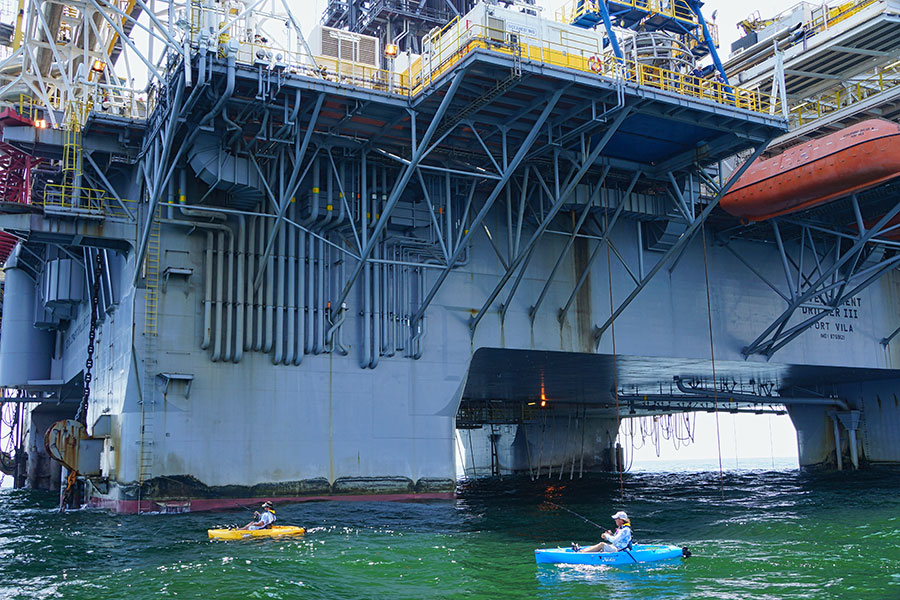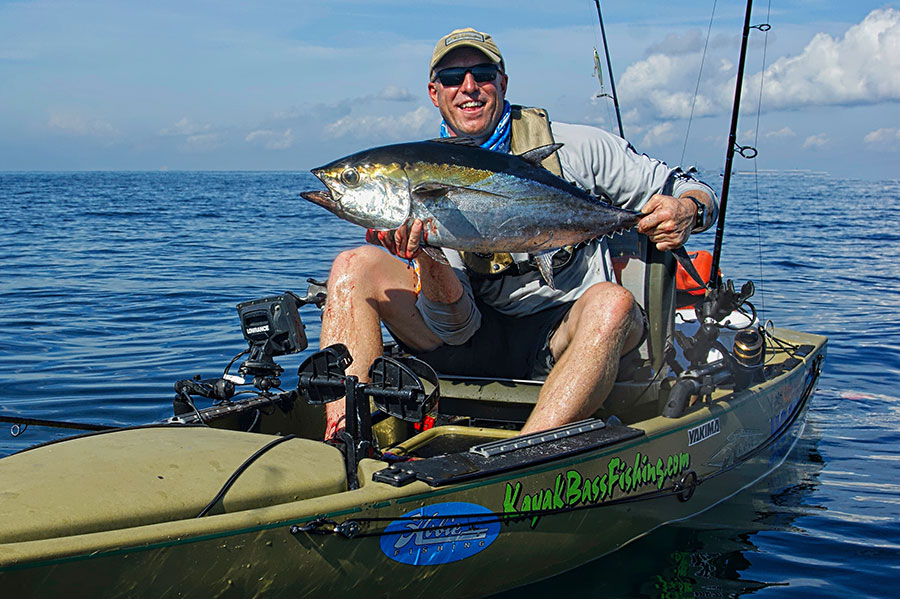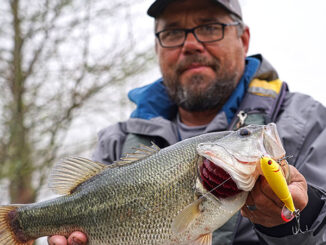
There is little doubt that Louisiana is a mecca for kayak fishing. Inshore, fresh or salt, there are virtually unlimited areas and numerous species available to kayak anglers. However, the one thing Louisiana lacks is easy access to offshore kayak fishing. Our neighbors to the east and west along the Gulf coast generally have beach access to clear Gulf waters and great fishing for a wide variety of bottom and open-water fishing. However, the freshwater influence of the mouth of the Mississippi river causes the need to go further offshore where kayakers cannot physically or safely reach — unless you use a mothership.
While there are some closer rigs out of the Grand Isle/Fourchon areas that hold snapper and other species, getting there is marked by several mile paddles and lots of open water. Sure, it is doable on a perfect day, but if the weather turns bad or some other emergency occurs, it is the last place you want to be in a kayak. Having a mothership for safe transport and other support is the only logical method.
Kayak anglers in Florida and Texas regularly launch from a public beach and easily reach green and blue waters of the Gulf. In Florida, red snapper can be caught in waters sometimes as close as a quarter mile or so from the beach and in waters less than 50 feet. Of course, further adventures bring access to pelagic species such as king mackerel and tuna. Louisiana has an abundance of these species, but kayak access is limited unless the kayak is carried further offshore.
Mothership needed
One of the easiest trips for Louisiana kayakers is fishing some of the closer oil and gas rigs. Various species of snapper, jacks and cobia are all great sport in the kayak. It is best to have minimum gear in/on the kayak. This makes loading and launching them from the mothership boat much easier. It is sometimes difficult to load many kayaks on the transport boat, so it is best to plan to bring along one or two kayaks and rotate the anglers with some kayak fishing while others fish from the boat. This allows using the boat to store extra equipment, a base to bring fish for keeping and, most importantly, a powered vessel that can respond to any emergency issues that may arise.
Most mothership kayak fishing will be with the use of private boats. However, if willing to pay, some offshore fishing charters will accommodate a group of kayak anglers chartering the whole boat. Loading the kayaks and securing them for the ride is important for passenger safety as well as preventing any damage to the kayaks or mothership.

The use of pool noodles to pad between the boat and kayaks themselves makes for a secure load that can take pounding on waves with no damage. Of course, the weather should always be taken into account and trips planned for days with minimal wave heights and low chance of storms. Always wear a PFD.
Experience a must
Not to be exclusive, but these trips are not for inexperienced kayakers or the faint of heart. Handling a bass or redfish in a duck pond is a whole different animal than coming face-to-face with a thrashing king mackerel loaded with teeth or even a large shark. Fighting an amberjack, a death spiraling tuna, or large snapper from deep waters takes different boat and rod handling skills. There are creatures swimming below that are larger than the kayak you are in.
Fishing near rigs takes some planning and attention to waves and currents. You don’t want to end up inside the legs of the rig, especially if conditions are a bit sporty. Of course, that’s exactly where the fish will try to take you in effort to break free. Pedal kayaks are best suited for this type of fishing. With your hands tied up on your rod and fighting the fish, the pedal system is necessary to move the kayak away from the structure where you can continue the fight out in open water. These rigs are working 24/7 and you always need to be on the lookout for any dangerous activities as well as supply boats accessing the rigs with equipment and personnel.
Of course, finding a rip or weed-line is also a great way to kayak fish offshore. Trolling along these areas can be productive for a variety of pelagic species and the thrill of catching a big tuna, king, mahi or even a wahoo from the kayak is crazy wild. A simple wire “stinger rig” hooked to a dead cigar minnow slow-towed 30 yards behind the yak attracts almost anything that swims. If you see active bait pods or birds working, heavy duty topwater baits or large spoons will usually draw a strike.
Anglers should bring minimum gear on the kayak. One rod and reel, a quality lip-grip like a Boga Grip, a hook-out or pliers, a knife for quick cutting your line if being pulled into a dangerous situation, some water and snacks. Be sure to put a leash or float on anything you don’t want to loose. There will be no diving to the bottom to retrieve lost items. It is also a good idea to carry a waterproof, floating VHF radio to stay in contact with each other and other vessels if necessary.
Once you have developed the skills and confidence to take your kayak fishing to the next level, get some friends together and plan a mothership offshore trip. It is safe to say that doing so will cross one more adventure off of your bucket list.

